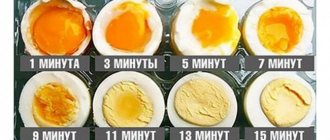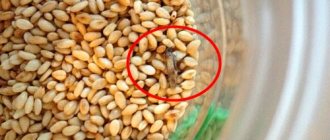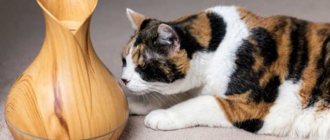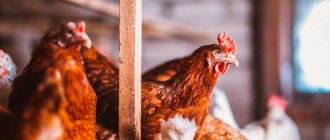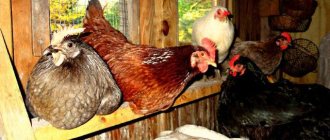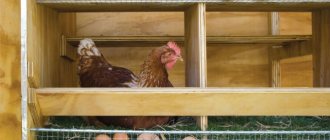| Place | Name | Characteristics in the rating |
| Top 10 best chicken coop heaters |
| 1 | Peony Thermo Glass Ceramic-10 | Most energy saving |
| 2 | KALASHNIKOV KIRH-E10P-11 | Best price |
| 3 | Nikaten NT 300 | The most reliable and safe |
| 4 | Peony 10 Lux | Large heat radiation angle |
| 5 | Timberk TCH AB8 1000 | It does not require special care |
| 6 | Hyundai H-HC5-10-UI496 | High quality build and materials |
| 7 | IcoLine IKO-06 | Compact and efficient |
| 8 | Almac IK8 | The best ratio of price and quality |
| 9 | Timberk TCH A03 1000 | There is a possibility of remote control |
| 10 | Ballu BIH-AP4-1.0 | The most popular heater |
No matter how you insulate the chicken coop and no matter what bedding you make, this will not be enough in the cold winter. The birds, of course, will not die, but they will not fly. The optimal room temperature should not be lower than +15°C, so you need to take care of heating the poultry house. Most often, poultry farmers use infrared heaters. Unlike other heating devices, they heat not the air, but the objects they are directed at. As a result, objects warm up first: perches, bedding, the chickens themselves, and from them the heat spreads into the air. The principle of operation is similar to the sun.
The heat from conventional convectors rises to the ceiling, causing it to be hot above and cold below. Infrared heaters do not have this drawback - they heat the room evenly. It is also a big plus that their heat does not burn oxygen and does not dry out the air.
When choosing an infrared heater for a chicken coop, you should pay attention to the following points:
- Device type depending on installation location
. IR heaters are installed on the floor, attached to the wall or hung on the ceiling. Ceiling and wall models are more suitable for a chicken coop, as they do not take up useful space. In any case, when installing a heater, the most important thing is to eliminate the possibility of burns. - A type of heating element
. The best models are those with halogen and carbon. Their main advantages are fast heating and long-term temperature maintenance. Devices with ceramic plates are also popular. - The presence of a thermostat
. This is a very useful feature for the heater, as it allows it to turn off when the set temperature is reached. In addition to safety, this also provides a bonus in the form of energy savings. However, ceiling models are rarely equipped with a thermostat, so you will have to purchase it separately. - Overheat protection
. The function is necessary for safe use of the device. In case of overheating, the device will simply turn off and thereby prevent a fire. - Power
. This indicator is directly related to the area of the chicken coop. Poultry farmers choose heaters based on the rule that there should be 80-100 W of power per square meter. When calculating, simply multiply the area of the room with this value. Also don't forget about the ceiling height. For example, to heat a chicken coop with an area of 10 square meters. m. a device with a power of 800 W to 1000 W is suitable.
Infrared heaters are very economical. The heat from them is retained in the room for a long time and is not consumed. If your chicken coop is well insulated and there are no cracks in it, then the operating time of the device will not exceed 25-30% per day. In this case, electricity consumption per month will be insignificant and will not exceed 40-50 kW.
We analyzed the market and selected the best infrared heaters for your chicken coop that will help you maintain the optimal temperature even in severe frost. The rating includes energy-saving models for rooms of different sizes.
Features of using infrared film
The main distinguishing feature of IR film from other heat sources is the peculiarities of heating the air in the chicken coop. More precisely, when infrared floors operate, it is not the air that is heated, but the objects located in the area of its action, including perches, bedding, walls, and the chickens themselves.
In this case, heat distribution is carried out with special comfort for the birds under care. With the convection heating method (local sources), thermal energy rises and, as a result, it becomes hot in the upper layers of air in the room, and cold in the lower ones. When connecting IR floors, the temperature is distributed evenly throughout the chicken coop.
With all this, the operation of infrared heaters does not lead to the burning of oxygen and drying out of the air. With such a heating system, drafts are not so bad for birds. However, all this works provided the poultry house is well insulated and there is deep litter.
Various schemes for fixing the heating system are possible; installation of the film on the floor, walls and ceiling is allowed. Moreover, it is the ceiling placement that is most preferable for a chicken coop. With this installation scheme, the heaters do not interfere with the bird or the owner’s work indoors.
Profitability
When using IR lamps to heat a chicken coop, we can safely talk about their profitability, because even in the coldest winters they are able to provide decent heating for a room with poultry.
This can be explained by the high efficiency value, which can be achieved by transferring heat directly to the chickens and objects in the poultry house, and not to the surrounding air.
In such conditions, not only the egg production of laying hens increases, but also the intensity of development of young birds increases.
If necessary, IR lamps can be used for spot heating (for example, an area of a chicken coop with small chickens), but even if you install several elements in the center of the ceiling, then you don’t have to worry about the uniformity of heat distribution.
To achieve this effect using alternative heating sources, you will have to spend more electricity, and therefore more money.
Heating system calculation
Before you buy infrared film, you should make simple mathematical calculations. Let's look at the definition of total footage using a specific example.
Determine how much infrared film is required for a chicken coop located in Moscow. The total area of the poultry house is 10 m2, the earthen floor is waterproofed using roofing felt, the load-bearing walls are 2000 mm high, insulated, the frame is made of 100x50 mm timber. The window is single with a wooden frame measuring 500x500 mm, the door is 600x1200 mm. Average winter temperatures typical for the Moscow region are -8…-15 °C. The required temperature in the chicken coop is 0…+5 °C.
If we consider that temperatures in the Moscow region in winter can drop to -30 °C, it becomes clear that the room shown in the example is not insulated enough. On average, its heat loss per square meter is 55 W. The heat loss of the window is approximately 75 W, the door - 175 W. The total heat loss is determined by the usual summation:
55·10+75+175=800 W
To compensate for heat loss and maintain the required temperature, we calculate the power of the heating system per 1 cubic meter of room. First you need to determine the volume of the room:
10·2=20 m3
To determine the required heater power, we divide the total heat loss of the room by the volume of the room:
800/20=40 W/m3
To determine the area of the film floor, you should check the characteristics of IR heating with the manufacturer. First of all, we are interested in the power per square meter. For example, for heating we plan to use underfloor heating STEM Standard KXT 310 with a power of 220 W/sq.m. We will need:
800/220=3.63 m2 of infrared film for this model.
A safe wintering is the key to the health and stable egg production of poultry. Preparing the bird's home for the cold period by organizing the heating of the chicken coop correctly in winter and late autumn will be an important step in caring for chickens. What set of measures must be taken to naturally insulate the room, and in what case will an additional heating device be required?
Content:
- Infrared heater Ballu BIH-AP4-1.0
- Infrared heater Timberk TCH A03 1000
- Infrared heater Almac IK8
- Infrared heater IkoLine IKO-06
- Infrared heater Hyundai H-HC5-10-UI496
- Infrared heater Timberk TCH AB8 1000
- Infrared heater Peony 10 Lux
- Infrared heater Nikaten NT 300
- Infrared heater KALASHNIKOV KIRH-E10P-11
- Infrared heater Peony Thermo Glass Ceramic-10
Is it possible to do without additional heating?
Sudden temperature fluctuations, unpredictable weather conditions and prolonged cold periods negatively affect the biorhythms and activity of poultry. In northern regions with a harsh climate and frosty winters, additional heating of the room is indispensable. A heater and wall insulation are required.
In the southern regions and regions with a temperate climate, it is enough to carefully consider a wall insulation system and provide the bird with high-calorie vitamin nutrition. The chicken coop should be heated using the principle of a thermos. The floor, walls and ceiling are laid with insulation; it is necessary to caulk all gaps, joints and cracks, leaving a small hole for ventilation. With this arrangement, chickens are able to withstand winter with an outside temperature of -12 C.
Required temperature
The optimal temperature inside the chicken coop during winter is +12…+15 C. Birds in this temperature regime feel comfortable and lay eggs stably. Temperatures can be reduced to +8 C.
On a note! Install a thermometer inside the coop to constantly monitor the temperature inside the coop.
There is no need to achieve temperatures above +15 C in winter, this will lead to increased energy costs and will not benefit the chickens. An increase in temperature in the chicken coop in winter disrupts the life biorhythms of the bird.
Practical recommendations from experts
If the poultry house is closed and the livestock does not have the opportunity to walk, then experts offer a program for intermittent operation of electrical appliances.
It is carried out as follows:
- At night, the birds sleep, and every hour of daylight alternates between 15 minutes of electricity on and 45 minutes of darkness.
- In the second week, the ratio of light and darkness is reversed: 15 minutes of darkness, 45 minutes of light.
- From the third week they return to 15 minutes of light, 45 of darkness.
Birds become disoriented; they feel the fifteen-minute switching on of electricity as a full day of light. Such a program reduces feed consumption by 6%, saves energy by 70%, reduces mortality, reduces the hyperactivity of the livestock, and fights are reduced to 10%.
But there is also a drawback - the size of the eggs decreases by one and a half percent.
Methods for insulating a chicken coop
There are two ways to create the optimal temperature inside the chicken coop in winter:
- install a heater;
- insulate the walls, floor and ceiling of the room.
In regions with harsh climates, both methods will need to be applied simultaneously. The insulation system is best thought out and implemented during the construction of the chicken coop.
Natural insulation
Natural insulation refers to the multi-layering of all surfaces in the chicken coop. The floor is made double or covered with insulation; an additional layer of expanded clay is often laid under the concrete.
The walls and ceiling are also lined with insulation, and all cracks are caulked. The roof of the chicken coop must be airtight; drafts inside the room are unacceptable. In this case, a prerequisite for normal air circulation in the chicken coop is the presence of ventilation, which also needs to be insulated.
Artificial insulation
Artificial insulation refers to the use of various types of heaters and electrical devices. These include:
- IR lamps;
- IR heaters;
- electric heaters;
- gas heaters;
- stoves;
- water heating.
When using each type of heater, it is necessary to consider a fire safety system and automatic shutdown of devices in the event of force majeure. The choice of heating agent depends on the technical capabilities of the room and the farmer’s goals. Electric heaters and stoves have gained the most popularity.
Combination of natural and artificial systems
To insulate a chicken coop, a combination of natural and artificial systems is used. Without insulation of walls, ceilings and floors, heat will escape to the street, the heater loses up to 50% of its efficiency. In regions with harsh climates, sources of natural insulation are not enough to maintain a temperature of +15 C indoors.
Insulation of the room
To ensure heat conservation inside the chicken coop, it is necessary to insulate all surfaces of the room: floor, ceiling and walls. If the old insulation has deteriorated or rotted, it must be completely removed.
A budget option for insulation material is polystyrene foam or mineral wool. They are used to sheathe the surface of walls and ceilings. The joints between the walls, floor and ceiling are caulked.
The natural insulation of the floor inside the chicken coop is a bedding made of straw, sawdust or other material. When pouring the floor with concrete or cement, it is recommended to lay a layer of expanded clay - this will significantly insulate the surface.
To prevent chickens' paws from freezing in winter, the layer of natural litter is increased to 20 centimeters. Over time, the floor becomes contaminated with chicken droppings; it must be promptly removed by adding fresh litter. The ideal material for bedding is sphagnum, which additionally disinfects the surface due to its natural properties.
Ceiling
The ceiling is the main place in the room where heat goes, according to the laws of physics. Mineral wool is often used to insulate the roof of a chicken coop. To prevent it from being exposed to moisture, waterproofing is installed. The hem is usually made of wood. All cracks are covered with polyurethane foam.
Additional heating
The choice of heaters is quite extensive; the farmer chooses a tool according to his preferences, the need for a thermostat and the technical capabilities of the room.
Electric heaters
There are different types of electric heaters. The main advantage of these devices is the ability to set a certain temperature that must be maintained. The devices are easy to use and easy to install.
The disadvantages of such systems include the relative high cost of the necessary resources in the form of the cost of electricity.
Heater
Type of electric heating device. Often such systems are installed in poultry farms and large farms. The essence of the device is the constant circulation of warm air from the heating element using fans. The room heats up quickly, warm air is evenly distributed throughout the space.
The main disadvantage of the air heater is the high cost of installing the heating system, additional ventilation equipment is required, and the device is noisy. When the heater is turned off, the room quickly cools down.
Oil heater
An electrical device that heats a room using a coolant in the form of special oil. Such heaters are characterized by a high degree of safety, mobility, absence of noise, efficiency and low power consumption.
The disadvantage of oil systems is the slow and uneven heating of the coop.
Electric convector
The operation of the device is based on air convection. An electric convector sucks in cold air from the room while releasing warm air. This ensures uninterrupted air circulation in the chicken coop. The device is easy to operate, it belongs to the class of energy-saving systems, does not dry out the air in the room, and has a low noise level.
For uninterrupted operation of the device, it is necessary to ensure stable operation of the electrical network. Disadvantage: the room cools down quickly after turning off the device.
IR heater
The operation of the device is based on the action of electromagnetic infrared radiation on living organisms. The device is not complicated, it is easy to install indoors. The IR heater operates silently and safely, consumes little energy and does not dry out the air in the room. IR film can be laid on any surface in the required plane.
Lamp rating
| Place in the ranking | Model option | Device type | Installation location | Average service life | Can be used for lighting |
| 1 | ESEXL 300 W/230 V | Stationary lamp | Ceiling | At least 1 year | No |
| 2 | Zilon IR-0.8 S | Stationary | Ceiling | At least 3 years | No |
| 3 | Nikaten NT300 | Panel | Wall | At least 5 years | No |
| 4 | Zebra EVO-300 PRO | Film | Ceiling, wall | About 5 years | No |
| 5 | IKZK-250 VT | Stationary / mobile lamp | Ceiling, tripod | 6500 hours | Yes |
Stationary lamps
Designed for permanent mounting on the ceiling or wall. Externally, they can be made either in the form of a regular incandescent lamp with a mirror coating and a red light filter (in this case, they are usually equipped with a metal lampshade-reflector), or in the form of panels with a plate-shaped (for long-wave models) or spiral-shaped (for short-wave models) working element. As a rule, stationary lamps also provide additional lighting, however, this is not typical for all models.
Advantages:
- Reliability. With proper fastening and connection, they are absolutely safe in terms of fire and can work for at least a whole day.
- Adjustability. Stationary models are almost always equipped with thermostats, and in some cases, timers and temperature sensors - then the device can turn on itself at the right time or when the room temperature drops below a certain level.
- Possibility to use ready-made infrastructure indoors. In particular, IR lamps can, if desired, be screwed into a regular incandescent lamp socket.
However, there are also disadvantages:
- The need to accurately select the location for fastening. Ideally, the device should be located on the ceiling; only as a last resort is it permissible to place it on the wall, pointing down.
- High energy intensity.
- Small lighting and heating area. On average, for every 10 sq. m of chicken coop area you need to install 1 device.
Temperature conditions for chickens in the chicken coop in winter to preserve egg production, as well as for walks Read
Keeping chickens in winter. Key points on equipping a chicken coop, organizing walking and feeding Read more
Proper feeding and optimal maintenance of broilers in winter for normal productivity View
Mobile
Structurally, these devices are made in such a way that they can easily move around the chicken coop, heating any selected area. They are useful in cases where it is not necessary to warm the entire room, but only part of it (for example, nests for laying hens or a hen with chicks in a fenced off corner).
Advantages:
- Easy installation.
- Ease of use.
Flaws:
- High power consumption.
- Less ease of use.
Film
These devices are a flexible package of three elements:
- The reflective layer is essentially an ordinary foil that prevents thermal radiation from passing through and directs it back.
- Heating layer. These are strips of carbon or other material that heat up when electric current flows through them.
- Conductive layer. It allows heat to pass through and is only needed to protect the carbon strips from damage.
Film emitters are convenient for the following:
- When placed in the lower part of the room ("warm floor" technology), they provide the best and uniform heating in the room.
- Compared to incandescent lamps and stationary emitters, they are more economical.
- Structurally equipped with thermostats. Without them, connection is usually simply impossible.
However, there are also disadvantages:
- The floor in the chicken coop is exposed to chicken droppings, and the birds also scatter pieces of food. A high quality conductive layer material is required. In addition, cleaning such a floor becomes more difficult.
- Difficult to install. The film can only be cut along technological lines in increments of about 25-30 cm. In irregularly shaped rooms this can lead to placement difficulties.
- The thermal film on the floor is sensitive to moisture, so spilled water from the drinker can cause a short circuit.
Are you using an infrared heater for your chicken coop?
Not really
Panel
Their operating principle is the same as that of IR film. The only difference is that the panels are inflexible, and therefore are usually placed not on the floor, but on the walls of the chicken coop. There are also mobile panels installed on the floor using the included stands.
Advantages of using them:
- Energy efficiency.
- Ease of installation. Even in the wall-mounted version, it is enough to move the fasteners.
The disadvantages can be considered:
- Placement in a vertical plane. The floor with the help of panels hardly warms up.
- In the mobile version, the panels will additionally have to be protected from chickens, who will probably try to use them for roosting.
Other ways without electricity
If the technical possibility in the room does not allow electricity supply, then stove, water or gas heating is used.
Using a potbelly stove
Type of stove heating for a chicken coop. Potbelly stoves require the installation of a chimney. You can heat the stove using wood, coal or fuel briquettes. All types of fuel are environmentally friendly and do not emit toxins. Maintaining a potbelly stove is cheap and not difficult. But using stoves in a chicken coop requires compliance with all fire safety standards.
The disadvantages of stove heating include the need to constantly add fuel material and the release of an unpleasant odor when fuel burns.
Heating a chicken coop with gas
One of the most practical, safe and inexpensive heating methods. The gas heating system is based on two possible methods:
- through water pipes;
- using a convector.
Such systems are used in poultry farms and large farms. The chicken coop heats up quickly, the room temperature is maintained at a constant level, there is no unpleasant smell or noise.
Water heating
The heated water transfers its heat to the batteries. Convenient, simple and safe. The room heats up gradually and evenly. Batteries can be made of cast iron, metal or plastic.
Which heater to choose?
Maintaining the correct temperature in the chicken coop in winter is a necessary condition for keeping chickens. When choosing a heater, it is necessary to take into account the technical capabilities of the room, the number of chickens and the final goals of the farmer. Some types of heating systems can be made and installed by yourself. The heater is selected according to the following parameters:
- technical feasibility of installing a fuel system;
- cost of installation and maintenance of the device;
- degree of fire hazard;
- the number of square meters of room that the device can heat;
- necessary ventilation system;
- presence of a thermostat.
It is important to remember that the effect of a heating device can only be achieved if the chicken coop is completely naturally insulated. Work on artificial additional insulation is carried out in combination with the natural insulation of the room.
For regions with a mild winter climate, the problem of heating a chicken coop is not as acute as in places with severe frosts - here natural heating is not enough. One way is to use an infrared heater. With the help of a red heater, you can save chickens in the cold from illnesses and decreased egg production.
A comfortable microclimate for chickens is important
Bottom line
Infrared heaters are a godsend for poultry farmers. Their use will allow you to create comfortable conditions for your birds and yourself without any special capital investments. It will be convenient for you to clean the chicken coop and feed the chickens. And they, in turn, will simply be ashamed not to thank you with their egg products.
We invite you to join our Zen channel and group on VKontakte or Odnoklassniki, where new articles are published, as well as news for gardeners and livestock breeders.
Similar articles:
- How to increase the productivity of laying hens in the cold season
- How to choose a chicken for the responsible role of a hen
- Chicken conflicts, how to restore peace in the poultry house
The benefits of positive temperature in the chicken coop
Artificial heating is necessary to prevent infectious diseases due to hypothermia. Draft and high humidity are negative factors. The minimum temperature threshold in the chicken coop is +7 degrees Celsius, a comfortable indicator is about 16 degrees.
The chicken's plumage allows it to withstand cold weather; its vulnerable spot is its paws.
Another reason to keep temperatures comfortable is to preserve fertility. For example, chicken raised for meat, with a lack of heating, slowly gains weight; the body spends most of its energy on warming itself. Feed costs will increase. There will be less meat, more fat.
If hens are hatching eggs, warmth is vital. It will be cold - there will be no eggs.
To maintain a minimum comfortable temperature, infrared heaters are used. Egg production increases by 40%, feed is consumed economically.
An infrared heater will not help if the chicken coop is not naturally insulated and drafts are not eliminated. The floor must be warm.
Asymmetrical Intermittent Mode
This is a kind of imitation of the natural alternation of day and night with a pronounced boundary between them. For this reason, emergency shutdown of lamps is not a stress factor for the bird.
With this regime, approximately 80% of eggs are produced on the artificial day. According to production workers, this is the optimal lighting option for egg farming.
During intermittent mode, half of the feed is consumed with the lights turned off. In this regard, a third of the feed mixture is fed before the birds rest at night.
It takes 12 hours to absorb calcium supplied with food. Therefore, after daily feeding, this mineral is excreted from the chickens’ body at two in the morning. It's time for the shell to form!
Types of infrared heaters
Heating a barn where chickens are kept can be organized using a red lamp. However, there are other energy-saving, efficient thermostats based on IR radiation. The peculiarity of the devices is that they warm up not the air, but the object they are aimed at. A heater that shines from the ceiling is more effective than on the wall.
The heat from a conventional converter-type heater rises to the top. The lower part remains cold. With an infrared heater, the light is directed downward to heat the bedding, nest, water, and food. Heat is reflected and distributed evenly throughout the room.
To prevent birds from breaking the flask, use a metal mesh around the heater
Infrared heaters do not burn oxygen.
To choose the right IR device for a chicken coop, you will need to take into account two criteria: the product must be economical and safe for everyday use.
To comply with the first condition, it is necessary to select a device with a temperature controller. When calculating the power of the device, we assume 80 W per square meter of room.
To comply with safety requirements, the heater is hung on the ceiling or wall - contact of the bird with the device is excluded. The wires are fixed to the wall or under the ceiling.
Infrared lamp - pros and cons
The design is simple - a tungsten filament is placed in a flask with argon and nitrogen. Device Features:
- When the device operates, the surrounding objects heat up, not the air.
- 10% is spent on lighting the room.
- The softness of the red light has a calming effect on the bird.
- Infrared radiation reduces humidity levels.
- Destruction of pathogenic organisms.
- Feed is better digested.
- Strengthens the bird's immunity.
- Easy to install and replace.
- Efficiency – 98%.
To organize lighting and heating in a chicken coop with an area of 10 - 12 m², a product with a power of 250 W is sufficient.
The heater is fixed to the ceiling using a platform with an E27 ceramic cartridge. When exposed to high temperatures, the plastic cartridge may melt.
Security measures
IR heater Energoinfra EIR 500 with autonomous thermostat
All devices operating from the electrical network must be safe.
The following rules should be taken into account:
- When purchasing lamps and heaters, you need to choose the right power. To do this, measure the area of the poultry house. A low-power device will be ineffective; a device that is too powerful wastes a lot of electricity and overheats the room. You can read the information on the product packaging, in the instructions, or consult the seller.
- The wiring in the coop must be able to withstand the load of the device to prevent short circuits.
- Ceramic cartridges must be used. The lamps have high power; the plastic melts during constant operation.
- The base can have different diameters. It must exactly match the diameter of the cartridge.
- A protective cap for the lamps should be made of metal mesh or wire to prevent chickens from being injured or damaging the structure.
- Heaters are installed at a height of one meter from perches and other objects to prevent them from overheating.
- When purchasing, you need to study the certificate and warranty card; it is better to purchase goods from trusted manufacturers. Chinese devices will not last long.
- The store checks the purchase for damage. All parts must be tightly secured.
Insulating the chicken coop
Sometimes it is enough to insulate the main surfaces - floor, walls, ceiling - to provide a comfortable microclimate for the bird to live and hatch its offspring.
Material selection
Foam plastic and mineral wool are suitable for walls. You can resort to plastering the walls with a composition based on clay, sand, sawdust (straw). An available option for ceiling insulation is ordinary cardboard.
You can save heating costs by installing deep, warm bedding. As the litter decomposes, it accumulates heat reaching 32 degrees.
Regardless of the type of heater, the effect will not be achieved unless the chicken coop is first insulated. Heat will escape through the cracks and be blown out by drafts.
Before you begin laying thermal insulation materials, it is necessary to seal the cracks in the walls and ceiling. You can use polyurethane foam, cement-sand mortar.
When choosing thermal insulation materials, you should evaluate fire safety, efficiency, and cost.
About ceiling insulation:
Main stages
After preparatory work to eliminate cracks and damage, insulation begins. Recommendations:
- A good insulation for room walls is basalt or mineral wool. Doesn't burn, rodents don't like it. Easy to install, conducts heat well, affordable. Mineral wool has good sound insulation properties.
- It is recommended to insulate walls with mineral wool from the street side. The cotton wool is fixed with plastic umbrellas. With a frame-panel construction of a chicken coop, the sheathing is installed, and the insulation is laid between the beams. The sheathing pitch is a couple of millimeters less than the width of the insulation.
- When installing mineral wool, before installation, a vapor barrier material is fixed to the walls to protect the insulation.
- A strong, durable concrete floor, but it is not suitable for a chicken coop; heat loss occurs through it. The solution is insulation.
- It is necessary to lay waterproofing material - dense polyethylene will do. It is laid overlapping, with an establishment on the walls around the perimeter of the room.
- Wooden logs are fixed with dowels. Insulation and vapor barrier are laid between them, covered with boards, moisture-resistant plywood, and OSB boards. A warm bedding is placed on top.
- Mineral wool and slabs of extruded polystyrene foam, which are resistant to moisture and rot, can be used as floor insulation.
The windows are covered with film, the cracks are eliminated with polyurethane foam. This approach will allow you to keep the chicken coop cooler longer on hot summer days.


